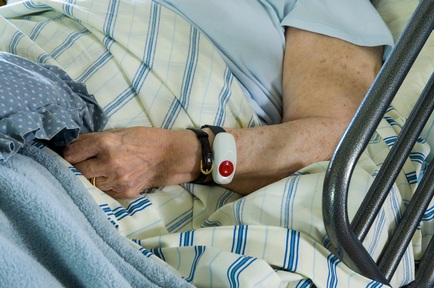Use of care home agency staff rises by over 50 per cent due to nursing shortage crisis
The nursing shortage crisis in care homes has led to the use of agency staff in care homes rising by over 55 per cent in just two years, according to a recent report.

In its report ‘The UK Nursing Workforce: Crisis or Opportunity’, specialist property advisers Christie + Co, claim that short-sighted workforce planning has resulted in the evolution of an ‘agency culture’ in health and social care over the past few years.
It reveals that an ‘agency culture’ has put huge financial pressures on care homes with the cost of agency staff typically exceeding the cost of regular staff by over 100 per cent on a per hour basis.
Earlier this year, the Care Quality Commission blamed poor care in care homes on a growing use of agency staff, saying continually changing rotas of agency staff can mean that warning signs of deteriorating health are missed.
Debbie Westhead, CQC’s deputy chief inspector of adult social care for the north region, said in The Times, “there are a few threads that run through the ‘inadequate’ inspection reports. One of them is shortages of staff and in particular an insufficient number of registered nurses in nursing homes”.
Agency culture
The report gives credence to her comments saying the ‘agency culture’ has increased the cost of care and put immense pressure of people providing the care.
‘As a result, the risk that these pressures result in a deterioration in the quality of care is also real. Policy makers need to be aware of these issues and take action. Thinking about health and social care as one system is absolutely essential for this’, it states.
Michael Hodges, director of Healthcare Consultancy at Christie + Co wants to see both policy makers and care home providers taking action to address the problem, saying ‘those who fail to act now will feel the impact for years to come’.
He added: “The findings of our report highlight the need for innovation in the sector from operators, regulators and policy makers.
“The announcement by the Government of an intention to place controls on payments to staffing agencies highlights the inefficiencies in workforce planning as detailed within our report.

“However, we believe that to fully address the issue, all parties need to address fundamental problems including a shortage of university place, training, up-skilling staff and immigration.
“With effective collaboration to provide a system wide solution to the crisis, we can ensure that there is a stable nursing workforce to meet the growing demands of an ageing population.”
The nursing shortage crisis has seen a lot of media coverage in recent months, with the Royal College of Nursing fearing problems could worsen further with the Government’s plan to curb how many years foreign nurses from outside the European Economic Area (EEA) can stay for.
Under the new rules, people from outside the EEA must be earning £35,000 or more if they want to stay in the UK for more than six years, which will force many nurses to return to their home countries.
In order to close the gap between demand and supply, Christie + Co suggests a combination of four things need to happen - the industry needs to significantly optimise the way nurses and care practitioners deliver care, every measure needs to be undertaken to entice nurse to enter or re-enter the industry and keep them from leaving, the number of funded university places needs to be substantially increased and also immigration needs to be encouraged and the barriers to overseas recruitment reduced.
Around 50,000 nurses work in the adult social care sector, which equates to around one in 10 nurses in the UK. Newly qualified nurses tend to gravitate towards the NHS, meaning the care home sector has an ageing workforce with a large number of nurses in care homes aged 55 or above.
To address this issue, Dr Pete Calveley, chief executive of Barchester Healthcare, believes that as well as increasing the number of training spaces, care home providers need to make the job more attractive to people. He gives his thoughts in the report, saying: “A clearly articulated career pathway is key. We offer the nurses and carers the following career steps: carer – senior carer – care practitioner – junior nurse – regular nurse – senior nurse – nurse specialist and the option to move at some stage into a managerial role with the potential to become regional manager.
New 'care practitioner' role
“At Barchester we have created the role of ‘care practitioner’ whereby a senior carer (NVQ level 3) is given an enhanced level of training so they can fulfil part of the nurse’s role. By the end of the year we will have 150 care practitioners on the floor and we hope that they will be part of the dialogue with our colleagues and peer providers, but also the CQC, local authorities and policy makers.”
He added: “The training and continuous support through technology and mentorship programmes is expensive, but so is £30 per hour in agency costs. Of the three nurses on a day shift in a care home, we are hoping to substitute one of them with a care practitioner, as we are currently filling the role with agency staff. We expect a long term pay-off from our efforts.”
He would also like to see the Government looking at the shortage of nurses in care homes as well as in the NHS, when deciding what job roles should be on the Shortage Occupation List, as if nurses were on the List, it would make them exempt from the new immigration rules.
Up-skilling care workers
Chai Patel, chief executive of HC-One, is also in favour of up-skilling nurses and care workers. He said: “Up-skilling nurses to take on a more specialist clinician role and up-skilling care assistants to take over some of the current operational duties of nurses would reduce the pressure on the number of nurses required permanently in a care home. We need to use nurses more judiciously and effectively rather than generically.”
Christie + Co concludes that the most likely scenario over the next five years is that the shortage in nurses will stay at its current rate of 15,000, but will require a system-wide innovation in staff usage in order to cope with an ageing population.
In the worst case scenario the shortage could grow to over 60,000 nurses, however this would require a combination of negative factors including a lack of innovation, a substantial reduction in immigration and a high number of nurses leaving the register, says the report.
Download the report here: http://www.christiecorporate.com/news/publications-data/care.aspx
Latest News Analysis
 04-Sep-19
Extra £1.5 billion announced for social care in Chancellor's Spending Review
04-Sep-19
Extra £1.5 billion announced for social care in Chancellor's Spending Review
 02-Jul-19
Department of Health forced to rethink care homes' nursing rates after legal challenge
02-Jul-19
Department of Health forced to rethink care homes' nursing rates after legal challenge
 18-Jun-19
Overnight care workers forced to sleep in offices and told 'bring your own bedding'
18-Jun-19
Overnight care workers forced to sleep in offices and told 'bring your own bedding'
 14-Jun-19
Back in the closet: Third of care home staff have had no LGBT+ awareness training
14-Jun-19
Back in the closet: Third of care home staff have had no LGBT+ awareness training
 11-Jun-19
PM candidates on social care: Rory Stewart calls fixing care an 'unfinished revolution'
11-Jun-19
PM candidates on social care: Rory Stewart calls fixing care an 'unfinished revolution'